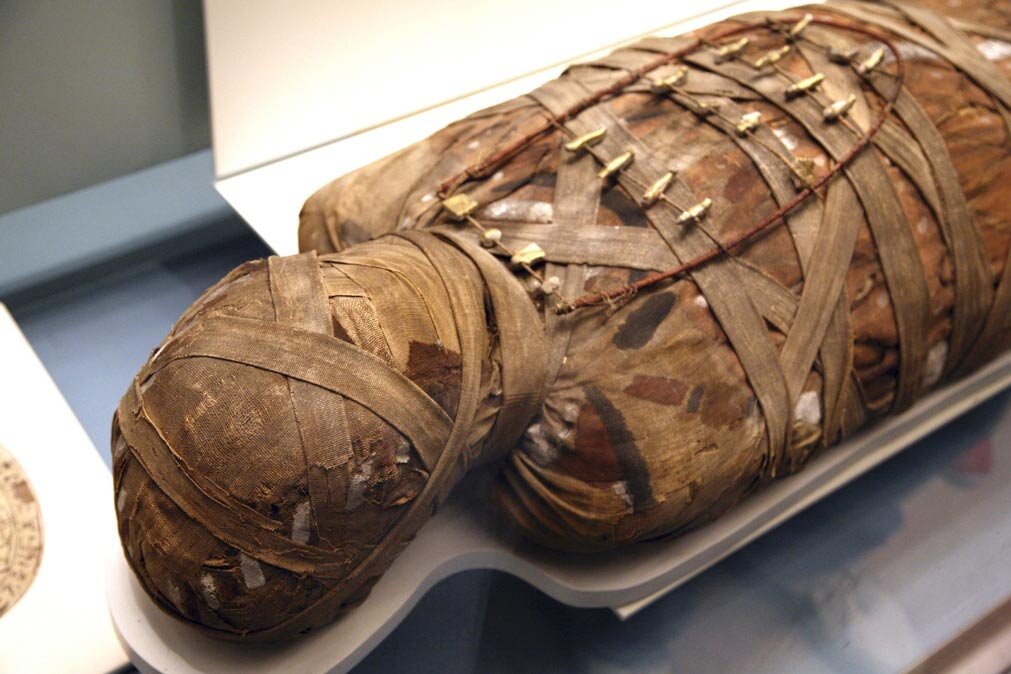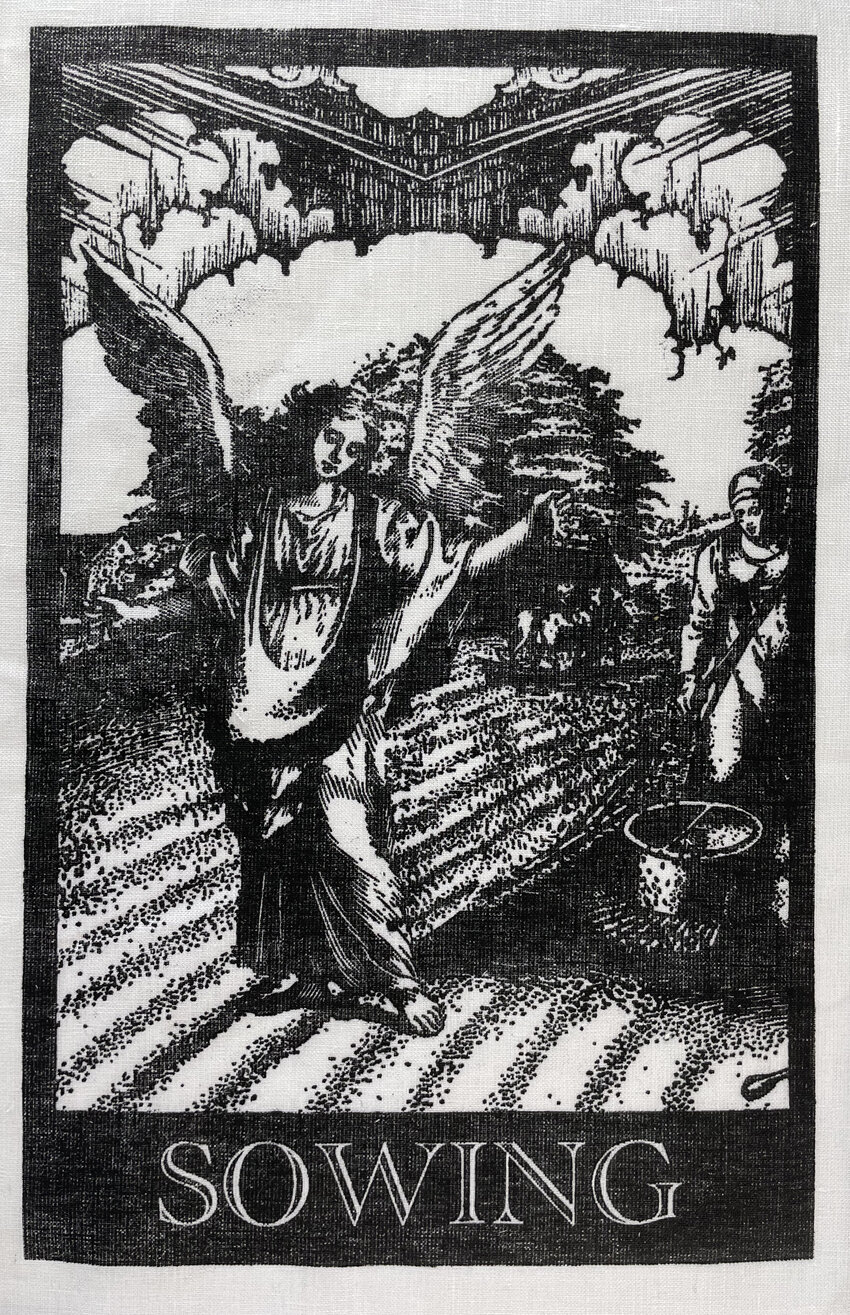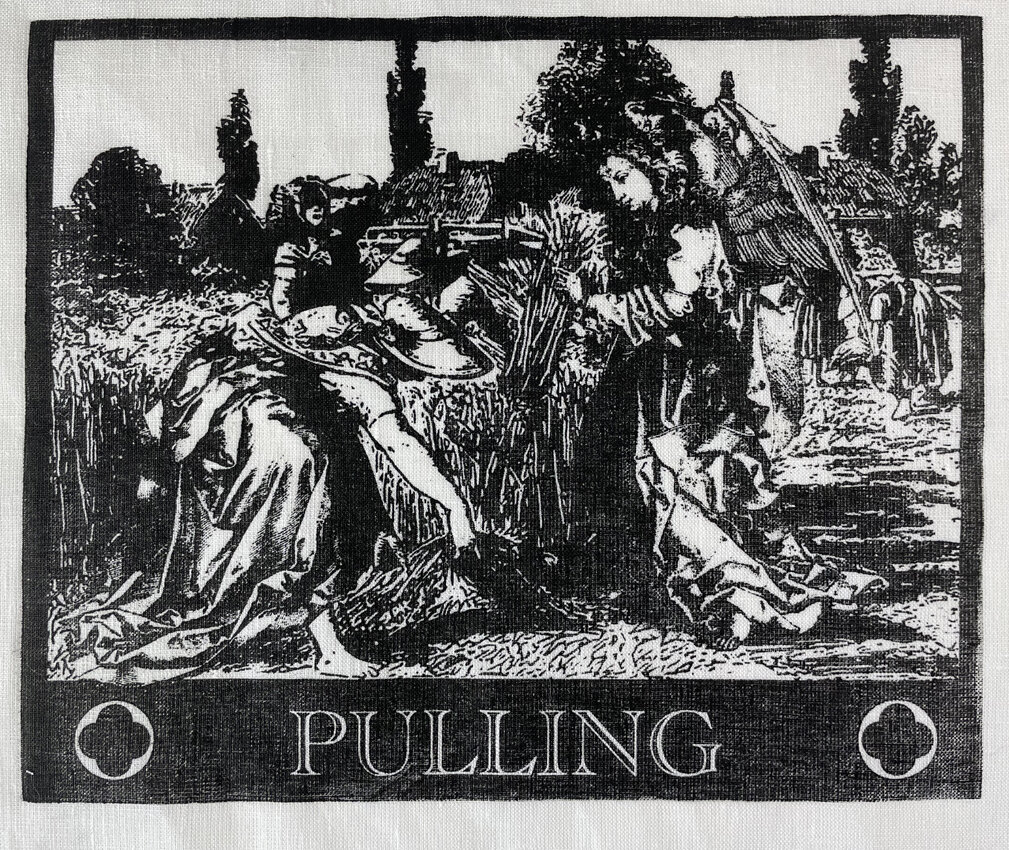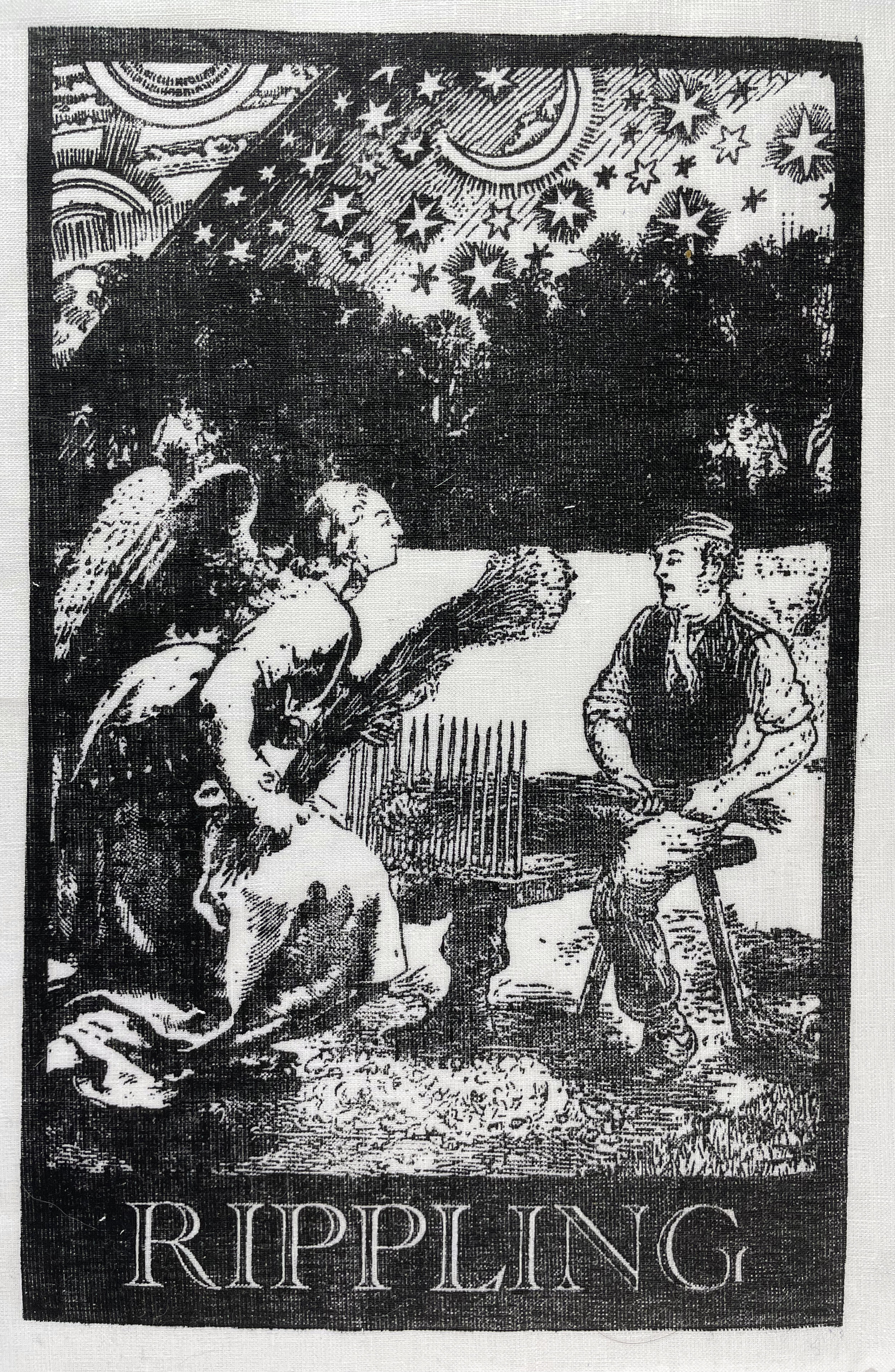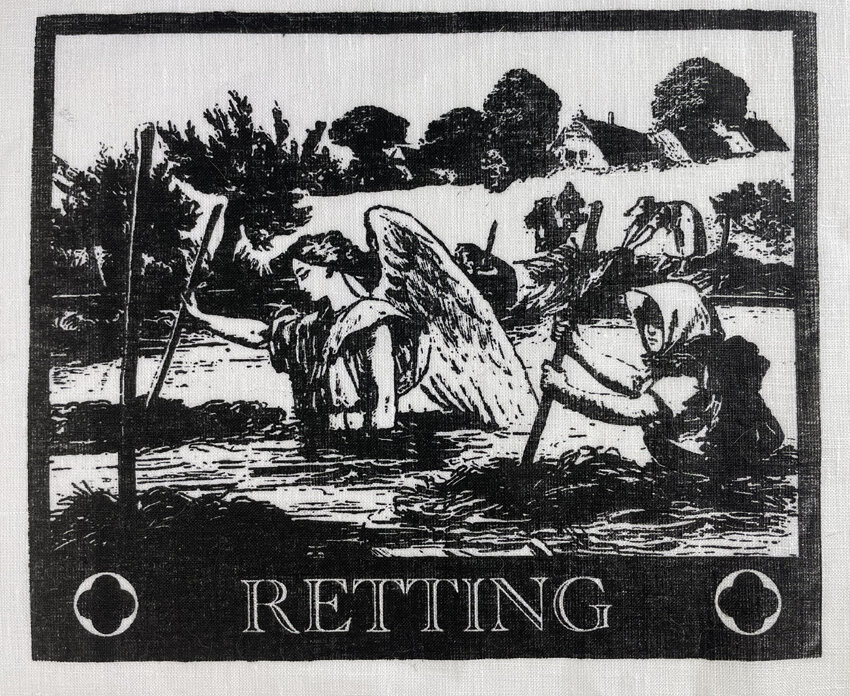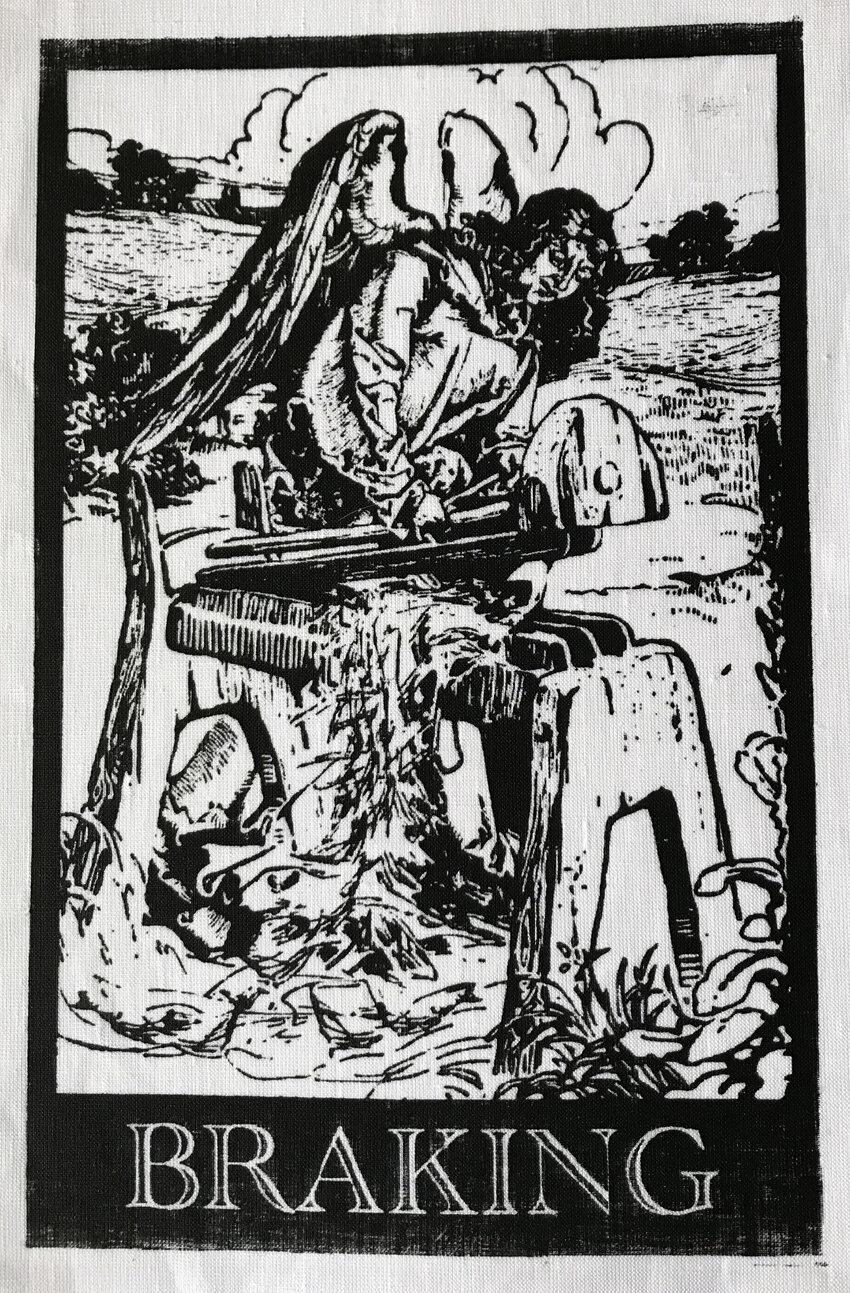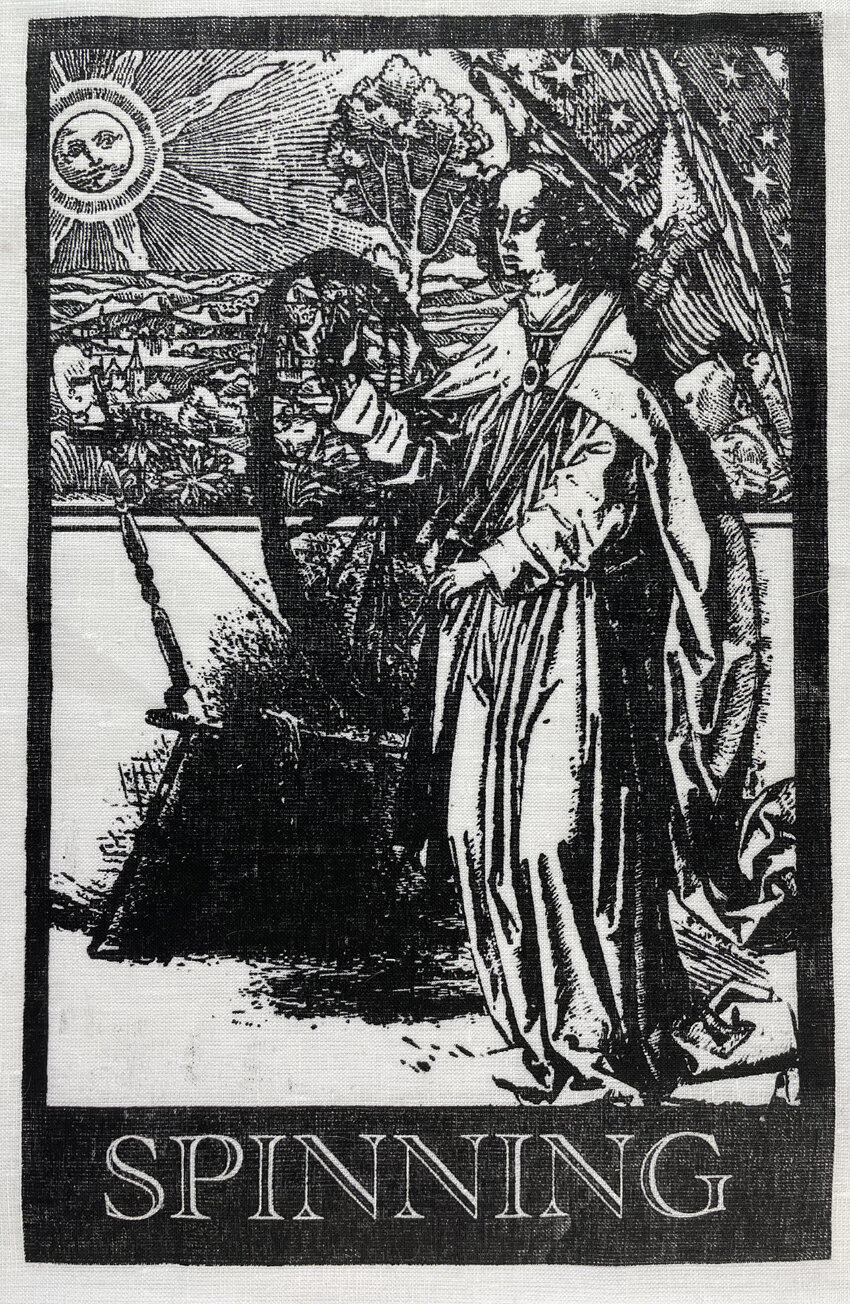Commissioned Artwork - Translating Linen
I was commissioned by R-Space Gallery in Lisburn, Northern Ireland to respond to a piece of music. No ordinary piece of music, but one that was devised by translating the genetic code of linum usitatissimum, the flax plant, into a music score. The composer was Dr. Anthony O’Kane, head of Scientific Affairs at Fusion Antibodies. The music, set to archival footage of the flax-to-linen process, was premiered during the 2021 Northern Ireland Science Festival. This interface between cutting edge science and one of the eight founder crops that established agriculture around 9,500BC required something huge, a memorial to Linen’s entwined relationship with humans.
My research started and finished with the poetic image of linen being imbued with the moon. The Egyptians described linen as woven moonlight because of its ethereal sheen. In her collection of short stories, ‘The Far Side of the Lough’ Polly Devlin writes, “Ah, it was a tedious old crop, flax, right enough, and it was a hungry greedy crop too, but the fields around the Cleggan were good flax fields, and there was money in it. I miss it, its beautiful blue colour. The fields were the colour of a summer sky, and when it was scutched it was so golden that it burned and glimmered as the sun and moon had mixed and fallen on it.” That seemed a suitable quote to place on the memorial I was ‘building’ to house Dr. O’Kane’s score sheets.
Wild flax fibres, discovered in a cave in Georgia, had been dyed by its Upper Palaeolithic inhabitants and braided into cords for hafting stone tools, weaving baskets and thread for sewing garments. The colour range includes yellow, red, blue, violet, black, brown, green, and khaki. Later cultures would hold the moon beam whiteness of bleached linen in high esteem. As mentioned the Egyptians considered linen to be woven moonlight, so Khonsu the male god of the moon appears on top of the columns supporting the memorial in both his human and hawk form. Mummies were wrapped in linen bandages and the quality of weaving is as sophisticated as modern times. Flax seeds were considered essential in the afterlife and have been found in the tombs. The column themselves are decorated with braided forms referencing the cave dwellers use of flax fiber. Linen is mentioned 104 times in 90 verses in the bible. Symbolic of purity it was used to make the curtains in Solomon’s Temple. It is worn by the seven angels who appear during the apocalypse carrying vessels containing the wrath of god. I decided to get them involved in something more positive and assigned them roles in the production of linen from flax. These are sowing, pulling, rippling retting, braking, heckling and spinning.
Flax was introduced into Ireland in the 11th century but it was the arrival of the Huguenots and Quakers in the 17th century that saw it emerge as a cottage industry of magnitude. The 17th century is of particular interest to the shaping of both Irelands industrial future but also its political future. Queen Elizabeth’s reign was marked by England’s ongoing attempts to subdue the Irish. It was also marked by a flowering of advances in math, geometry and mechanics, the first stirrings of an awakening enlightenment. The recognition of how little was understood about the laws of nature was encouraged the proto-science of alchemy and an interest in revealing Nature’s secrets by ‘following in her footsteps’, hoping to locate the code that would illuminate a new knowledge.
The structure of the image echos the alchemists obsession with architecture, the Elements, magic, mechanics, Egyptian and Jewish mysticism in their desire to understand God’s work, He being the architect of the universe. Francis Bacon was an alchemist as well as an early proponent of the scientific method of experimentation and observation. Issac Newton’s interest in alchemical matters is historically glossed over as a slight aberration. With the implications of the counter reformation and the fear induced by witch crazes these early scientists eschewed the ‘mystical’ communing with nature and pushed forward with a mechanistic approach which offered control over nature, forming the Royal Society in 1660. This mechanistic approach would eventually lead to the industrial revolution and establishment of linen mills throughout Ulster. They stretch behind the monument spewing smoke. This scientific method would also lead to the development of synthetic fibres and the demise of the linen industry. For the alchemist, linen’s future would have been written in the stars but mechanistic science has revealed its code.
Collaborative artwork with Dr. Anthony O’Kane
The sheets of music are contained within the monument held together by strands of DNA recalling the symbolic tee of life. The Angels work below by the symbols flanked by symbols of the Huguenots and Quakers The hermetic sun bleaches, the moon sits atop under a garland of flax flowers. The night sky contains the constellations the plough and the star sign Nylon 6 and Nylon 16.
3,200 year old Egyptian Mummy
Fig. 1. (1 to 7) Fibers from Dzudzuana, Georgia, unit D. 1, twisted flax fibers; 2 to 4, flax fibers; and 5 to 7, unraveled flax fibers. (8 to 12) Fibers from Dzudzuana, unit C. 8 and 9, twisted flax fibers; 10 and 12, flax fibers; and 11, dyed flax fibers. Source: Science · October 2009
Linen Memorial, archival inkjet on linen 1500cm x 3749cm
Funded by Arts and Business Northern Ireland
The genetic code determining the shape, structure and function of every organism is written in the codex of DNA. Patterns of 4 bases clustered to form chains of 21 amino acids that form the proteins that govern everything in a process known as translation.
Dr O’Kane explains the process of extracting musical notation from the DNA structure of the flax plant.
The digital collages created for the large wallhanging were also translated into relief blocks by laser cutting the images. These were hand printed onto Linen. This was made possible through a partnership project with South Eastern Regional College’s Engineering Department.
The talks from the launch of Translating Linen courtesy of R-Space Gallery


